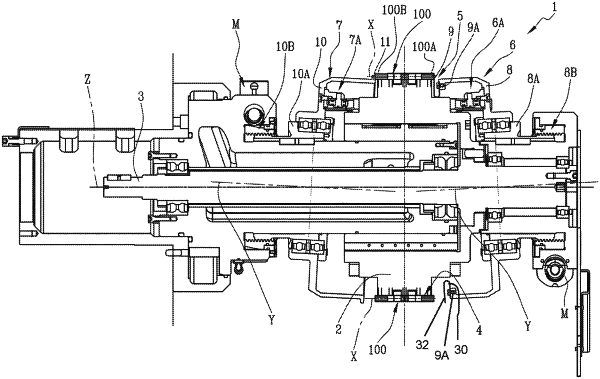| CPC A24C 5/327 (2013.01) [A24C 5/478 (2013.01); A24D 3/0241 (2013.01)] | 12 Claims |

|
1. A compacting unit for tobacco products, configured to axially compact groups of rod-shaped segments intended to form rod-shaped smoking articles, wherein each group of segments comprises at least two segments which are disposed in axial alignment with each other and axially end to end, the compacting unit comprising:
a conveyor drum configured to convey the groups of segments along a feed path which extends in a feed direction and which meets a compacting station for compacting the groups of segments, wherein the conveyor drum includes a plurality of housing grooves, each housing groove being configured to receive and retain one of the group of segments disposed perpendicularly to the feed direction,
a first compactor having a first contact portion adapted to be placed in contact with a first axial end of at least one of the group of segments in transit in the compacting station,
a second compactor having a second contact portion adapted to be placed in contact with a second axial end of the at least one of the group of segments in transit in the compacting station,
wherein the conveyor drum rotates about a feed axis and includes the housing grooves arranged parallel to the feed axis at an outer mantle of the conveyor drum to move the housing grooves along the feed path,
wherein the first compactor and the second compactor are configured to act in conjunction with each other at least at the compacting station to apply an axial compacting action on the at least one of the group of segments via the first contact portion and second contact portion,
wherein the first compactor comprises a first compacting member rotatable about a first compacting axis,
wherein the first contact portion is disposed circumferentially around the first compacting axis and is mounted on the first compacting member to protrude axially from the first compacting member towards the second compacting member, the first contact portion having a first end mounted on the first compacting member and a second end, opposite the first end, being a free end and configured to engage by contact the first axial end of the at least one of the group of segments in transit in the compacting station,
wherein the first contact portion is configured to be elastic and/or be mounted elastically on the first compacting member such that the second end is resiliently mounted on the first compacting member by an elastic portion and is axially movable towards and away from the first compacting member,
wherein, upon axial engagement between the second end and the first axial end of the at least one of the group of segments in transit in the compacting station, the elastic portion becomes elastically deformed and the second end is subject to a spring force, exerted by the elastic deformation of the elastic portion, directed away from the first compacting member and towards the first axial end of the at least one of the group of segments in transit in the compacting station, to compact the at least one of the group of segments,
wherein the second compactor comprises a second compacting member defining the second contact portion,
wherein the first compacting member is disposed around the feed axis and the first compacting axis is inclined to the feed axis such that the first contact portion is placed in contact with first axial end passing through the compacting station and such that the first contact portion is disposed at a minimum distance from the conveyor drum at the compacting station and at a maximum distance from the conveyor drum at a position diametrically opposite to the compacting station.
|